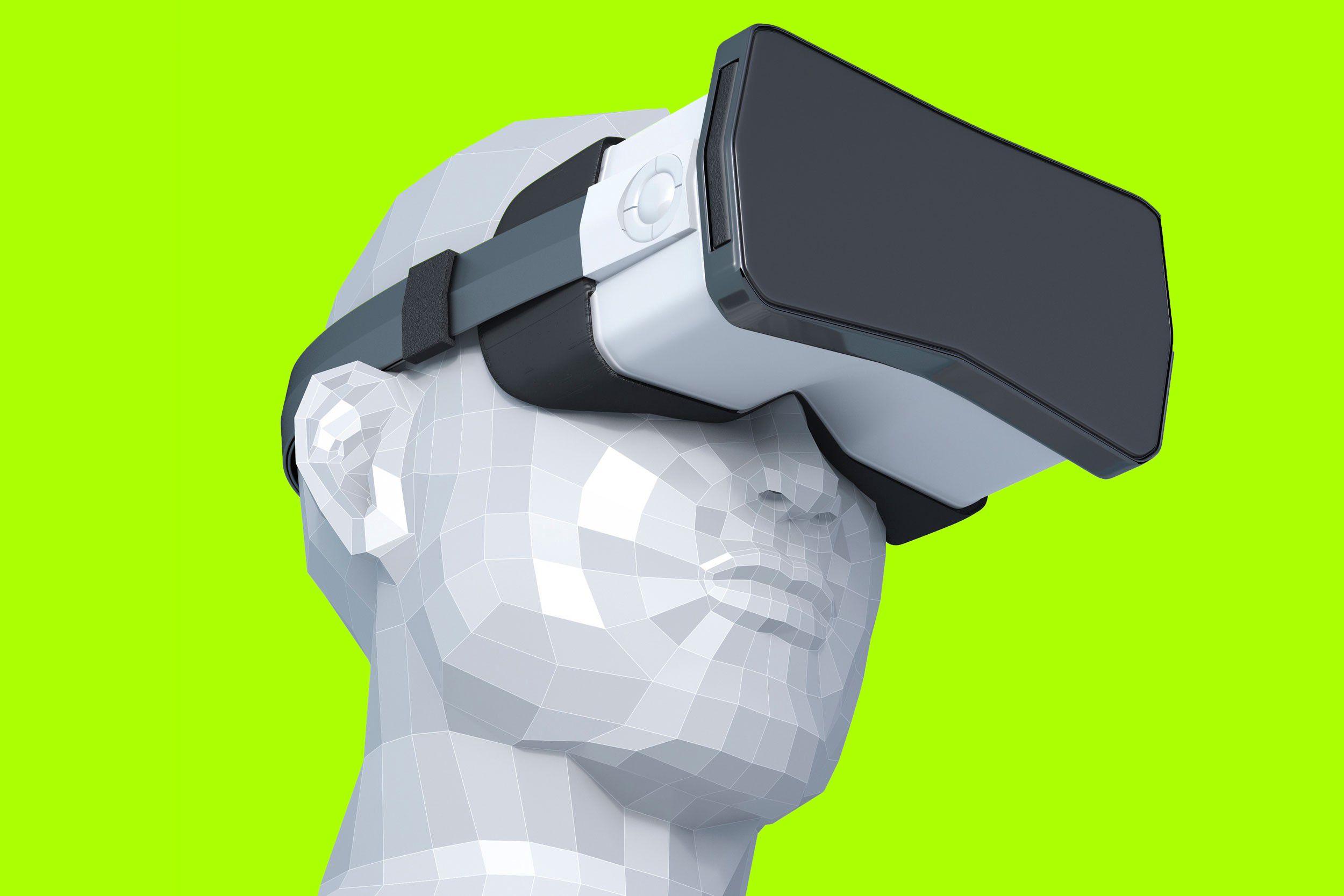In an interview at Code Conference earlier this summer, Facebook CTO Mike Schroepfer took a moment to wax poetic about the possibilities of virtual reality.
“It’s one of those things that’s hard to describe until you try it,” he told Recode’s Kara Swisher. “But when you have these moments, these vivid memories of being in VR with another person — this is a technology that I think is gonna erase geographic boundaries for people.”
Schroepfer would know better than most people. He had demoed a virtual “toybox” hangout at the social network’s annual conference a few months earlier, slipping on an Oculus headset in front of a crowd of developers to share 360-degree photos of London with his colleague, Michael Booth. They pointed out landmarks for each other. Booth drew Schroepfer a cute Facebook-themed tie. They even bobbed their floating mannequin heads together to take a virtual reality selfie. Schroepfer later revealed that virtual reality meetings like that one, although less performative, were a common occurrence at the company — the VR team held them every Friday afternoon.
The prospect of virtual reality conference calls might seem incredibly futuristic, if not dystopic. But the idea of meeting in a virtual place to just, you know, hang, dates back to the early aughts. It existed in its most simplistic form during the dial-up era, when AOL chat rooms full of strangers talked about whatever, eventually creating the infamous internet shorthand “A/S/L?.” Around this time, games like The Sims caught hold, allowing people to experiment with living another online human existence in complete isolation from the rest of the world.
It wasn’t until Second Life launched in 2003 that one could fulfill the fantasies of establishing a second online persona, real or exaggerated, alongside a community of people who wanted to do the same. Now, as virtual reality headsets are becoming more accessible (and Facebook continues to tinker with an application that will eventually be released to the masses), smaller tech companies have jumped at the opportunity to claim a spot in the “social” virtual reality space, navigating a new plane of human interaction. Leading the pack is AltspaceVR, a small Redwood City–based company that has raised over $15 million with the pitch that its virtual reality app is a more natural way to interact than phone calls, texts, or video chat.
When Altspace launched last summer, it resembled a virtual reality version of its most low-tech predecessor: the AOL chat room. Anyone with access to a few choice headsets was invited to create an avatar — of which the options were limited to a few robots and vaguely customizable human cartoons — and was dropped into a Silicon Valley–inspired common room with towering glass walls and sleek wooden floors. There they were encouraged to interact with other members, whose varying locations were displayed with pins on a rotating globe in the corner of the room. Typically that meant instructing your avatar to approach someone, saying “hello,” and hoping that your greeting wouldn’t be drowned out by the sound of the other person vacuuming in the background in real life.

But the inherent awkwardness of being pushed into a room with strangers wasn’t the only thing that Altspace had in common with dial-up-era chat rooms. It soon became clear that users could be subject to the same kind of abusive behavior that has plagued the internet in unregulated social spaces for decades. When journalist Taylor Lorenz visited the Altspace welcome room earlier this spring, she was reminded that she could still be made to feel uncomfortable simply for being a woman: “My skinny brown-haired avatar was swarmed by male users rubbing on me and asking if I was as skinny in real life or just a fatty behind an avatar,” she wrote for Mic. “I felt ripped from the virtual world and transported back to middle school.” Though I didn’t experience any unwanted attention when I tried the app, meeting with Altspace marketing director Jerry Gottheil in virtual reality made me recognize that it was easy to feel suffocated by another avatar. Still getting used to the Samsung Gear’s track pad, I’d accidentally tapped the ground nearby him and found myself face-to-face with a man who I had never met, his beady cartoon eyes next to mine. I immediately apologized and backed away.
“If somebody walks up close to you, you feel it,” he acknowledged in our interview. “And you’re like, ‘Hey, you’re a little close,’ even though you’re an avatar, they’re an avatar. You have this sense of presence.”
Though AltspaceVR always keeps a moderator in its main room to prevent unsavory activity, it has added features along the way to protect visitors’ personal space, and encourage group activities over idle conversation that could lead downhill. There’s an option to turn on a “space bubble” so that when others get too close, they move through your avatar as if it were a ghost, rather than getting in your face and consuming your whole line of vision. And the moment I entered the main lobby of the app, I was given a thorough tutorial on how to greet users with a set of emoji that, when tapped, will bubble up above the head of your avatar. I was also immediately taught how to block other people.
More recently Altspace has made a subtle shift away from the free-for-all chat room setup. It has introduced one-on-one calls, so that you can meet in that same slick lobby with a single person, whether you want to use that space to watch a YouTube video or play air hockey. The company is also encouraging group activities that range from Dungeons & Dragons to — in one case — a live stand-up performance by Reggie Watts (who received his very own custom avatar, complete with his signature fro). Using a technology Altspace calls “FrontRow,” the company is able to mirror performers’ avatars to all audience locations, allowing them to project their performance to various rooms, so the performers’ rooms don’t get overloaded and lag. The company hopes to expand the feature to include authors and other people of interest going forward. There’s also a game that resembles frisbee golf, in which users attempt to throw a disk into holes, that recently surpassed its 1 millionth disk throw (who knows how many of these were failed attempts at understanding how the game worked; I sucked at it). According to Gottheil, engaging with people in social VR gets them to stay for significant periods of time, ranging from 30 minutes to several hours.
As my VR interview with Gottheil neared an end, I sensed exactly what he and Schroepfer meant by that mutual, memorable experience. In just a half hour we had watched the “This Is What You Came For” music video, transported to several rooms, thrown pumpkins and disks, fought with swords, and doodled on blank easels. By virtue of us agreeing to meet in that space, we had engaged in an intimate meeting, uninterrupted by push notifications or, given the fact that my eyes were covered by goggles, anything short of a fire alarm. Though Altspace may still be wrestling itself from its chat room roots, anything that can so effectively command the attention of a smartphone-dependent person like me feels like the future.
“When you meet with somebody in VR, there is a sense that you are together, that you experience something with that person in a way that you wouldn’t [otherwise],” he said. “I don’t think I hear people say they get that sense if they’re on telephones or if they’re on Skype or video chat or whatever.”
